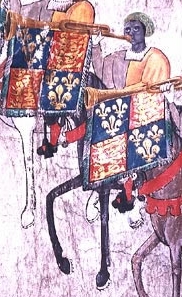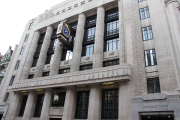
Music serves as the catalyst for an exceptional social-history exhibition currently on display at the British Library in London.
Embarking on a journey through 500 years of cultural history requires substantial effort and collaboration. This is how ‘Beyond the Bassline: 500 Years of Black British Music’ emerged as a significant exhibition at the British Library in London. Exhibition curator and public historian Dr. Aleema Gray acknowledges the initial skepticism: “People kept asking, ‘Why is the library telling the story?’ But the British Library’s impressive sound archive was the perfect starting point.”
Bringing a vibrant concept into the traditionally quiet British Library underscores the exhibition's essence. ‘Beyond the Bassline’ is more than just music; it showcases over six million sounds from the library’s archive, encompassing poetry, local tales, opinions, and rare recordings. It’s a rich tapestry of voices and perspectives. This exhibition uses Black British music as its narrative thread, presented through 200 illustrations including audio-visuals, manuscripts, stage outfits, sound systems, Sony Walkmans, photography, and even Beethoven’s tuning fork.
Designed by Freehaus, a firm based in East London, and created in partnership with the University of Westminster, the exhibition traces African and Caribbean music, creatives, and entrepreneurs in Britain from the 16th century to the present. It begins with John Dee’s 1577 map Brytannicæ Republicæ Synopsis, which was presented to Elizabeth I, inspiring ideas of naval expansion and empire-building.
“The music and culture we’re celebrating emerged from a broader transatlantic exchange, shaped by colonialism and empire, but also bringing diverse people together,” says Gray. “While American Black music often dominates our perception of Black culture, this exhibition highlights the unique British story – genres like lovers’ rock, jungle, garage, and grime that were born and nurtured here.”
The exhibition features notable figures such as Bob Marley, Stormzy, Soul II Soul, Joan Armatrading, Shirley Bassey, and Samuel Coleridge-Taylor. But ‘Beyond the Bassline’ delves deeper, illuminating the social scenes and community spaces that fostered Black British music. Memorabilia from venues like the 1970s Dundee social, the Reggae Klub, Manchester’s Reno funk and soul club, and London’s Soho jazz clubs offer a glimpse into these vibrant communities.
The photography alone makes the exhibition a must-visit, capturing a burgeoning British photographic style from the late 1970s and 1980s, a time when personal cameras became affordable, and everyday documentation became a natural, often spontaneous, practice. Club poster designs, T-shirts, and record-sleeve art reveal a distinctly British aesthetic, with contributions like Pauline Black’s iconic trilby from The Selecter highlighting the fusion of music and fashion. The exhibition also features paintings by Jamaica-born, British-based artist Errol Lloyd, alongside a specially commissioned short film and sound installation by Tayo Rapoport and Rohan Ayinde in collaboration with the south London-based musical movement Touching Bass.
Freehaus’ first foray into exhibition design, this ambitious project spans 500 years of history. Their approach is inventive and sensitive, employing light, texture, color, and perspective to complement the subject matter. Dr. Gray praises their work: “Freehaus delivered a design that was flexible, meaningful, sensitive, and perfectly aligned with our curatorial vision.” Photo by Wikimedia commons.







































